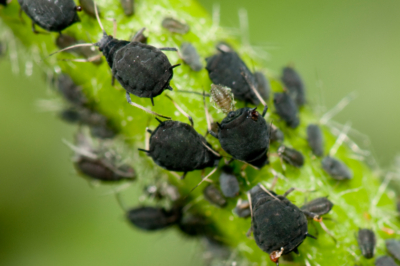Not only we humans, but also aphids love peppermint. If you don’t do anything about it, the harvest may fail altogether. If possible, you should not wield the chemical club so that you can enjoy your peppermint as a tea or spice without worries.

Regularly inspect peppermint for aphids
Peppermint is very often infested with aphids. Therefore, check your plants as regularly as possible, so that you can do something about the pests at the first appearance.
Infestation of aphids can be seen with the naked eye. You can see the little creepy-crawlies, which, unfortunately, can also fly, on the top and bottom of the leaves. The leaves are covered with a sticky mass.
Since peppermint is used in cooking, you should resort to biological means and not use chemical aphid killers. The herb will not be edible for weeks afterwards.
- Biological means to combat aphids
- Nettle broth
- Soap suds
- Tobacco decoction
- Insect hotels
- Ladybugs
- For light infestations
Collect the aphids by hand or rinse them down with water from a spray bottle. The stream must be somewhat stronger when doing this, as the aphids are quite attached.
In case of heavy infestation
If the plants are too heavily infested, decoction that you make from nettles, tobacco or soapy water will help. Treatment must be done several times to be effective. You should then wait two to three weeks before harvesting.
Put fresh nettle herb – without flowers! – in cold water for two days. Then strain the decoction and spray the infested leaves with it. Tobacco decoction can be made in the same way.
For soapy water, use curd soap. Dishwashing detergents are not good. Dissolve the soap in water and pour the suds into the spray bottle.
Prevention against aphids
The best protection is other insects such as lacewings and ladybugs. Settle beneficial insects in the garden by hanging insect hotels near peppermint.
Tips & Tricks
Keep an eye out for ant trails in the garden. Ants keep veritable louse farms on the peppermint. Disrupt the walkways so the ants can’t bring new aphids onto the peppermint, and remove any ant nests near your vegetable and herb beds.

